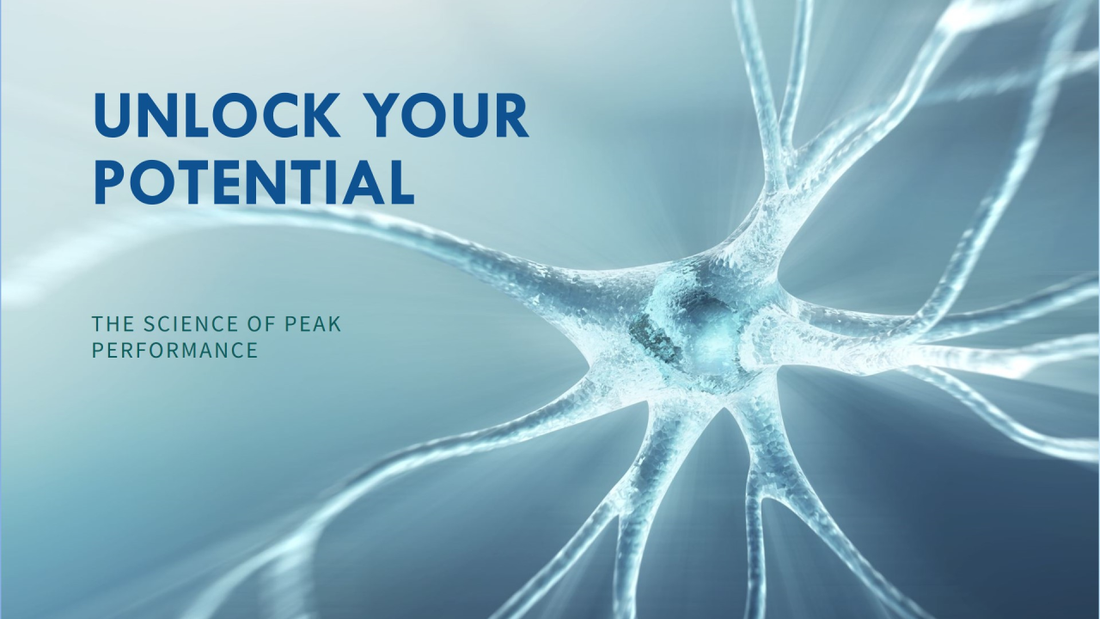
The Science of Peak Performance: How Your Neural Makeup Shapes Your Potential
Share
At ASPN, we believe that peak performance is not a one-size-fits-all endeavor. Every individual’s mind and body are unique, driven by distinct neural patterns, neurotransmitter profiles, and biological tendencies. The key to unlocking elite performance lies in understanding these personal nuances and tailoring strategies to optimize them.
Your Neural Blueprint: The Key to Personal Optimization
Your brain is like a fingerprint—no two are exactly alike. From the way you process stress to how you recover from challenges, your neural blueprint plays a critical role in your performance. ASPN’s innovative NeuralFlex Profile decodes this blueprint through a minimally invasive salivary brain scan that maps stress across 11 key brain regions.
Scientific studies have shown that chronic stress can alter brain structures such as the prefrontal cortex and amygdala, impacting decision-making and emotional regulation (McEwen, 2017). By identifying these patterns, we can provide targeted interventions to optimize your performance.
The Neuroscience of Performance
Peak performance isn’t just about working harder; it’s about working smarter by leveraging the latest advances in neuroscience. Here are three key ways your neural makeup influences your potential:
- Stress Response: Research demonstrates that individual variability in the hypothalamic-pituitary-adrenal (HPA) axis affects how people respond to stress (Smith & Vale, 2006). By understanding your neural stress patterns, we develop strategies to optimize your focus under pressure while minimizing burnout.
- Neurotransmitter Balance: Neurotransmitters like dopamine, serotonin, and GABA play crucial roles in motivation, mood, and recovery. For example, studies indicate that dopamine dysfunction can impair goal-directed behavior (Grace, 2016). Our protocols include personalized nutrition and supplement recommendations to support optimal neurotransmitter function.
- Recovery and Adaptation: Recovery isn’t just physical—it’s mental and neurological. Heart rate variability (HRV) is a well-established marker of autonomic nervous system balance, directly linked to stress resilience and recovery (Shaffer & Ginsberg, 2017). ASPN uses real-time biometric tracking, including HRV, to monitor your recovery and ensure your brain and body are primed for peak performance.
Beyond Physical Fitness: A Holistic Approach
While many performance programs focus solely on the physical, ASPN takes a holistic approach, addressing the mental and biological components that are just as critical to success. Our protocols include:
- Custom Training Plans crafted by experts who have coached Olympians, NBA champions, UFC fighters, and other elite athletes.
- Mental Performance Coaching informed by research-backed techniques in neuroplasticity and resilience-building, inspired by leading frameworks such as cognitive-behavioral therapy (CBT).
- Nutrition and Gut Health Optimization: The gut-brain axis has been extensively studied, showing that gut microbiota influence neurotransmitter synthesis and inflammation (Cryan et al., 2019). Our plans are designed to reduce inflammation, support gut health, and enhance brain function.
- Real-Time Feedback and Evolution: Our programs evolve with you, adapting to your biometric data to ensure continuous improvement.
Who is ASPN For?
ASPN is designed for high performers in every arena—from athletes and military personnel to entrepreneurs and first responders. If you’re striving to excel, push beyond limits, and redefine what’s possible for yourself, ASPN is here to guide you.
Join the Future of Performance
Your potential is waiting to be unlocked. By understanding and optimizing your unique neural blueprint, you can achieve levels of performance you never thought possible.
Are you ready to take the next step? Join the waitlist today and discover how ASPN can help you optimize your mind, body, and biology for peak performance.
References:
- McEwen, B. S. (2017). Neurobiological and systemic effects of chronic stress. Dialogues in Clinical Neuroscience.
- Smith, S. M., & Vale, W. W. (2006). The role of the hypothalamic-pituitary-adrenal axis in neuroendocrine responses to stress. Dialogues in Clinical Neuroscience.
- Grace, A. A. (2016). Dysregulation of the dopamine system in the pathophysiology of schizophrenia and depression. Nature Reviews Neuroscience.
- Shaffer, F., & Ginsberg, J. P. (2017). An overview of heart rate variability metrics and norms. Frontiers in Public Health.
- Cryan, J. F., et al. (2019). The microbiota-gut-brain axis. Physiological Reviews.